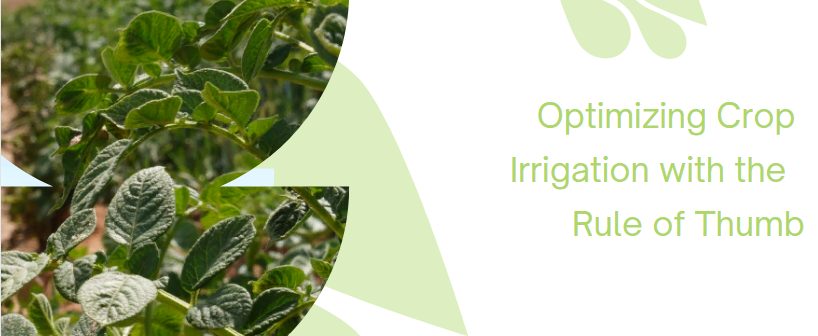#Agriculture #Irrigation #SustainableFarming #WaterManagement #CropFactor #KcRule #EnvironmentalImpact #AgriculturalProductivity
In the quest for efficient and sustainable agricultural practices, optimizing crop irrigation is of utmost importance. One approach that some Tasmanian growers employ is the use of a “rule of thumb” based on the crop factor (#Kc) and percentage canopy closure. This rule helps determine the right amount of water a crop requires, ensuring that the irrigation process is effective and the crops remain healthy. This article delves into the development and consequences of employing the #Kc rule of thumb for irrigation scheduling, along with guidelines for testing it in different environments.
The #Kc rule of thumb revolves around the concept of crop factor (#Kc), which is a numerical value representing the water needs of a specific crop during its various growth stages. Growers use this factor, along with the percentage of canopy closure, to assess the ideal timing and quantity of irrigation required.
Understanding Crop Factor (#Kc): The crop factor (#Kc) varies depending on the crop type, stage of growth, and local environmental conditions. It is typically higher during the crop’s active growth stage and reduces during other phases. Agricultural experts and researchers determine #Kc values through field experiments and observations, making it an essential parameter for irrigation scheduling.
Utilizing Percentage Canopy Closure: Percentage canopy closure refers to the extent to which the crop canopy covers the ground surface. This measure helps in estimating the crop’s water requirements as a dense canopy results in increased water loss through transpiration.
Calculating Effective Irrigation: To optimize irrigation, growers multiply the crop factor (#Kc) with the crop’s reference evapotranspiration (ETo) to determine the crop’s actual evapotranspiration (ETc). The ETc represents the amount of water the crop requires to reach its maximum potential yield. By considering the percentage canopy closure and other environmental factors, growers can tailor irrigation schedules to meet the crop’s specific needs at different growth stages.
The adoption of the #Kc rule of thumb for irrigation scheduling has several positive consequences for both the environment and agriculture:
Water Conservation: By accurately estimating the crop’s water requirements, growers can avoid over-irrigation, reducing water wastage. This water-saving approach promotes sustainable water management, particularly in regions facing water scarcity.
Enhanced Crop Productivity: Providing crops with the right amount of water at the right time leads to improved crop health and increased productivity. It minimizes the risk of under-watering or over-watering, both of which can adversely affect yields.
Economic Benefits: Optimized irrigation practices result in higher crop yields, leading to increased profitability for farmers. Additionally, reduced water usage translates into cost savings, making agriculture more economically viable.
Environmental Impact: Proper irrigation management prevents nutrient leaching and soil erosion, minimizing the environmental impact of agricultural activities.
To apply the #Kc rule of thumb in different environments, farmers can follow these steps:
Gather Data: Collect information on the crop being cultivated, local weather conditions, and soil type.
Calculate Crop Factor (#Kc): Determine the appropriate #Kc values for the crop’s growth stages based on research or consult with agricultural experts.
Monitor Canopy Closure: Regularly assess the percentage canopy closure to understand the crop’s water loss patterns.
Measure Soil Water Status: Use soil moisture sensors or other relevant tools to monitor the soil water status before and after irrigation.
Evaluate Plant Stress: Observe the crop for signs of stress or inadequate water supply.
Adjust Irrigation Schedule: Based on the gathered data, adjust the irrigation schedule to align with the crop’s water requirements and growth stages.
By testing and refining the #Kc rule of thumb in their specific environments, farmers can further optimize their irrigation practices and contribute to sustainable agriculture.
Source: Australian Potato Growers
